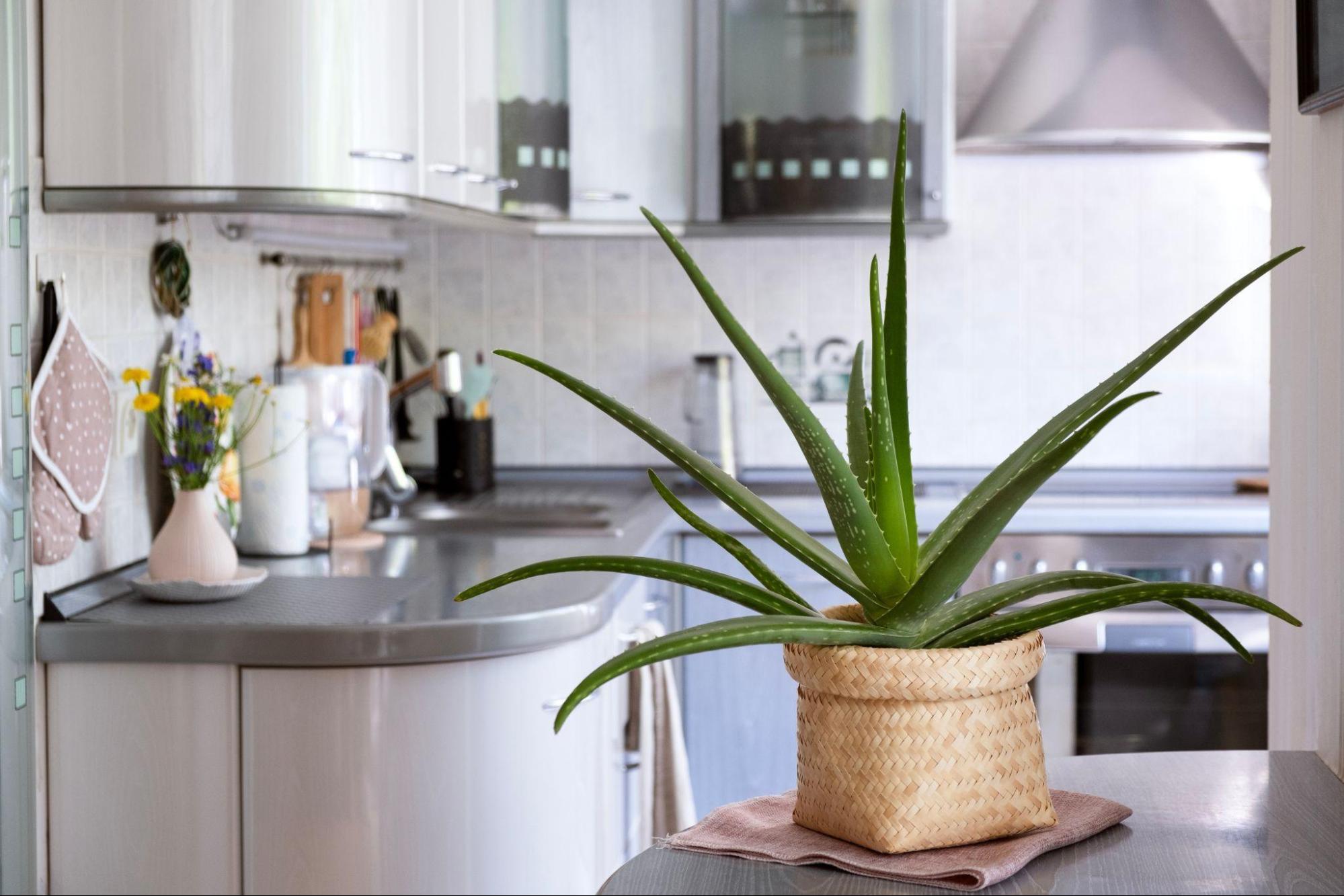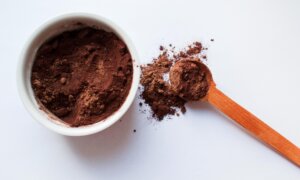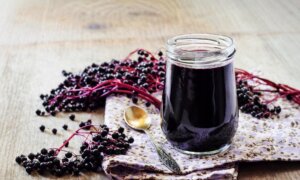A popular houseplant that might be decorating your home right now is known for its beneficial skin care effects. Aloe vera treats sunburns, burns, insect bites, and eczema. Aloe also promotes collagen production and relieves constipation and gastric ulcers.
Research has found that aloe emodin, a compound found in aloe vera, is antibacterial, anti-inflammatory, anti-diabetic, cardioprotective, and offers bone protection. Aloin, another compound found in aloe, is also anti-inflammatory and helps with bone issues, cancer, and cardiovascular disease.
Effects of Aloe
1. Treats Eczema, Sunburn, and Burns
If a mosquito bites you or you’re accidentally burned, the aloe plant comes in handy. Just cut a leaf and open it up to release its liquid. Then, apply it to the bite or burn to quickly relieve the itching and pain. Because of its inherent cooling properties, aloe can quickly cool the wound and reduce inflammation, redness, and swelling.
A 2022 meta-analysis showed that treatment of second-degree burns with aloe achieved an earlier recovery by about four and a half days over standard treatment.
Aloe is also great for sunburn. A Japanese clinical study found that aloe sterol supplementation improved skin elasticity in Japanese men under 46 with sunlight-exposed skin.
A study of 64 women, with an average age of 44, showed that continuous supplementation of aloe sterol significantly increased skin hydration and elasticity, as well as the collagen content in the dermal layer.
The use of aloe for treating skin ailments dates back to ancient times. Liu Yuxi, an eminent Chinese poet of the Tang Dynasty, recorded in his “Chuan Xin Fang (Prescription for Communication)” that he used 1 tael (1.3 ounces) of aloe and 5 qian (0.9 ounces) of licorice root and ground them into powder. He washed the affected area with warm water, dried it, and applied the preparation. After it dried, he proclaimed his eczema cured.
2. Moisturizes Skin and Increases Collagen
A 2024
study published in Molecules found that a mixture of aloe vera leaf extract and trimethylglycine increased the amount of aquaporins, which help transport water molecules across membrane layers by as much as 3.8 times, thereby improving skin hydration.
In addition to moisturizing, aloe stimulates collagen synthesis. The rich polysaccharide and acetyl mannan in aloe can promote the proliferation of fibroblasts responsible for producing collagen, making the skin look firmer and younger.
3. Protects Gastrointestinal Tract
In addition to being an external agent for beauty, aloe is very effective when taken orally. For people with gastric ulcers or gastrointestinal problems, aloe is a natural medicine that can protect the gastric mucosa and facilitate wound healing. The polysaccharides in aloe can form a protective layer in the gastrointestinal tract, reduce gastric acid irritation, relieve gastric ulcer symptoms, and promote the regeneration of gastric mucosa.
Studies have found that aloe vera gel is more effective than pantoprazole in treating gastric ulcers caused by ethanol. Its therapeutic effects may be achieved, at least in part, through its antioxidant, antisecretory, and antipyroptotic healing effects.
Oral administration refers to ingesting the gel from the core of the aloe vera. The yellow latex between the gel and the outer skin must be removed first. This is because the latex contains anthraquinone compounds, which are highly irritating and potentially toxic.
4. Relieve ‘Hot’ Type Constipation
Aloe can be included in compatible prescriptions such as Danggui Longhui pills, a branded traditional Chinese medicine over-the-counter product. It is well known for its therapeutic effects in treating intestinal peristalsis and promoting bowel movement in those with long-term constipation.
Compounds such as aloe emodin in the aloe latex layer and polysaccharides in aloe gel are also found to improve constipation.
However, you should not rely on aloe vera as a laxative for long periods. If the intestines are regularly stimulated by external agents for bowel movements, there is the risk that intestinal cells will undergo apoptosis, which can result in the loss of their normal functions.
Also, because of its cooling nature, aloe vera is only suitable for treating heat-type constipation, which presents as dry, hard, large stools or pellet-like stools resembling sheep droppings. Aloe vera is not recommended for cold-type or deficiency-type constipation, as it may cause diarrhea. Cold-type constipation is characterized by loose, unformed, sticky stools or an incomplete bowel movement.
5. Improves Oral Ulcers and Insect Bites
Aloe can repel insects and relieve itching from their bites. In the event of a mosquito bite, rub some fresh aloe on the bite area for quick itch relief. The cold and bitter nature of aloe also helps remove heat and moisture from the body and repel insects.
Aloe’s antibacterial and anti-inflammatory effects can also be applied to the mouth. Ancient Chinese medical literature compiled in the “Compendium of Materia Medica” states that grinding aloe into powder and applying it to bad teeth is very effective. Modern mouthwash and toothpaste often contain aloe, which can reduce gingivitis and dental plaque and improve oral ulcers.
Studies have found that the acetyl mannan in aloe plays an important role in the healing process of oral wounds by inducing the proliferation of gingival fibroblasts and stimulating the expression of keratinocyte growth factor, vascular endothelial growth factor, and type I collagen.
Ways to Choose and Eat Aloe
Although aloe provides many benefits, not all types are edible, and not everyone can eat it without adverse effects. Therefore, we must be extremely careful and take the following two points as good guidance:
1. Proper Selection and Processing
There are quite a number of aloe varieties, some of which are not edible. Taiwan’s Food and Drug Administration stipulates that the only two types of edible aloe are Aloe vera and Aloe ferox, and the outer layers must be completely peeled before eating.
Improper handling of aloe can harm the body because there is a layer of yellow latex between the pulp gel and the outer peel. This latex contains toxic agents such as aloe emodin, which can cause discomfort to the intestines or skin, cramps, redness, swelling, and even harm to the liver and kidneys.
Correct handling starts with washing the outer layer, followed by peeling along the flat side and then scooping out the pulp gel. Make sure to remove and wash the yellow latex before cutting the pulp into pieces.
To make a cool and enjoyable treat to relieve the heat, mix a bit of aloe pulp with honey, lemon juice, or yogurt.
It is recommended not to eat too much aloe the first time. Start with 5 grams (0.2 ounce) and slowly increase it if you feel no discomfort. However, the daily dosage should not exceed 15 grams (0.6 ounce). Aloe is cool in nature, and long-term consumption of large amounts can cause diarrhea. People worried about being too cold can cook aloe before eating it.
Who Should Avoid Eating Aloe
People with weak constitutions and pregnant women should avoid eating aloe. People with weak constitutions tend to have cold hands and feet in winter, are afraid of wind in summer, and often suffer from joint and back pain. They are susceptible to diarrhea after eating aloe. For pregnant women, eating aloe may cause uterine contractions and affect the fetus, so it’s better not to take the risk.













